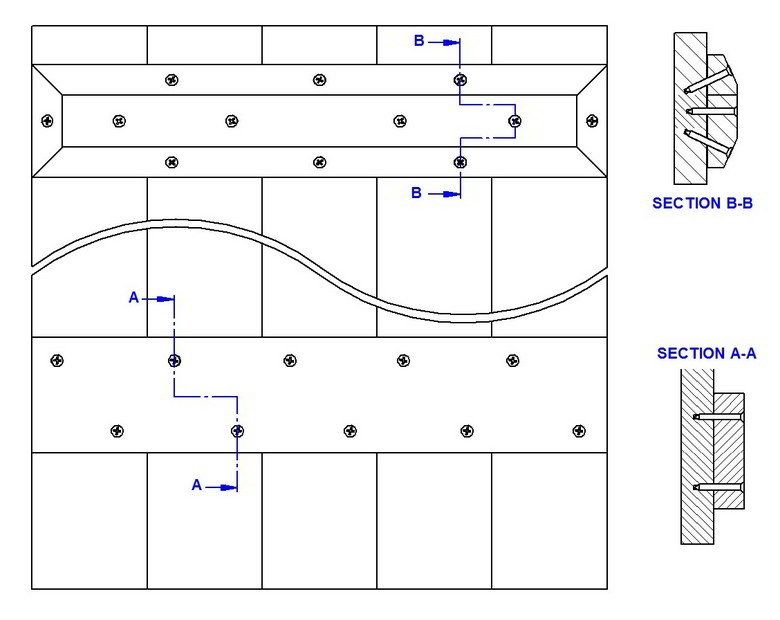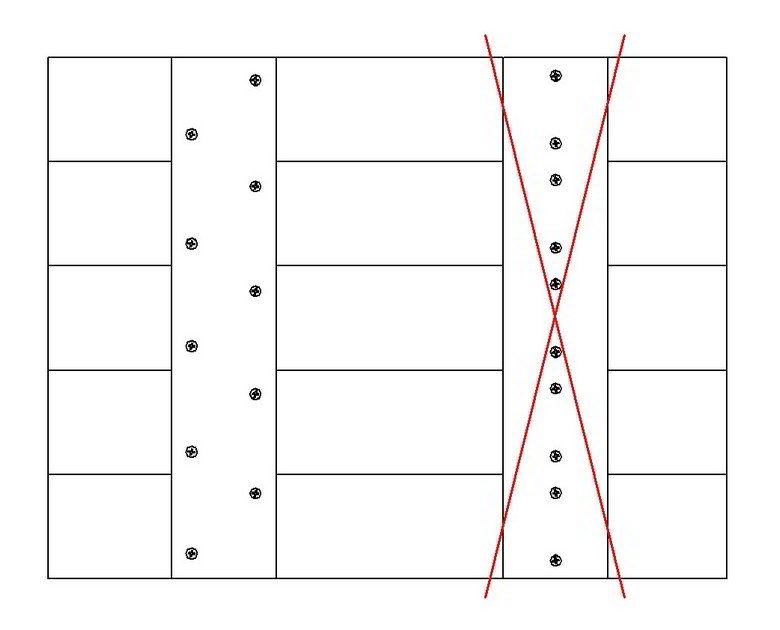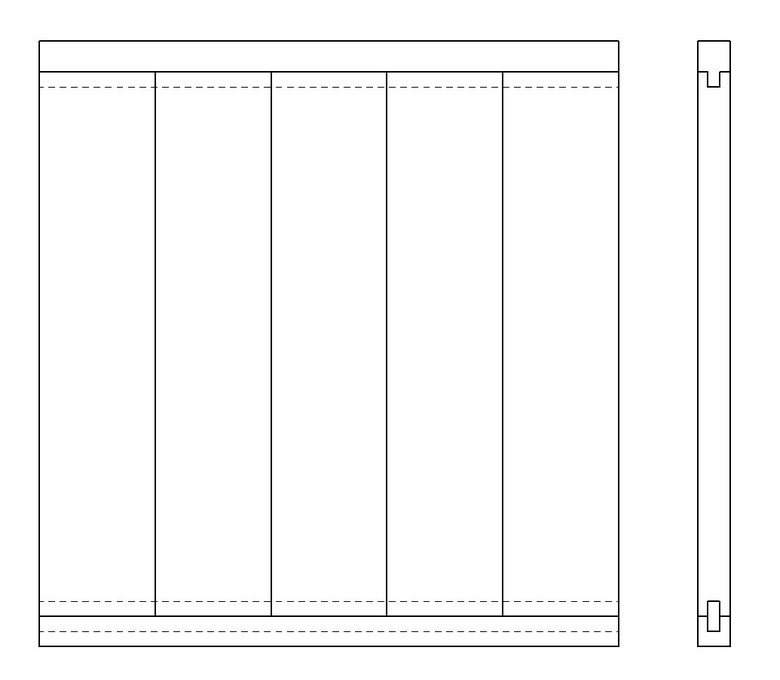A strong way to join two or more pieces of board or plank to make a wider piece is to cleat them.
A cleat is a piece of material fastened across the width of a board to prevent its warping and to reinforce the butt joints between the boards. If the surface is composed of several pieces, the cleat is also designed to hold them together. It may be applied to the back of the pieces, or across the ends. As the grain of the cleat is at right angles to that of the surface to which it is fastened, and since wood shrinks and swells more across the grain than with it, there is likely to be some movements of one on the other, and the fastenings used to secure the cleat should be of such a nature as to allow it. Otherwise, the edges of the board will be rigidly held, and shrinkage will result in the formation of large cracks, by the splitting of the board somewhere near the center. Screws are undoubtedly the best fastenings, as they will yield, to some degree, without becoming loosened. nails frequently answer every purpose; and dowels are sometimes used. Glue is unserviceable. When it is used alone, the cleats soon drop off; and when used with other fastenings, it either gives way entirely, or breaks at intervals, causing local cracks.

Side cleating is the more effective of the two methods, because the cleat may be larger and, for this reason, the fastenings be applied to better advantage. But, when exposed to view, side cleats are unsightly, and are often objectionable because they increase the thickness of the piece as a whole. The proportions of the cleat may vary with the duty expected of it.
Do not put the screws or nails in a straight line, but "stagger" them.

If the pieces are short they can be cleated across the ends. End cleating is not so strong, but the cleats are out of the way and do not increase the thickness of the piece. To supplement the fastenings, a narrow tongue may be formed on the board to fit a corresponding groove in the cleat. Grooves can be cut in both cleat and board, and a tongue or spline inserted. These operations are done best bu machinery. End cleating does well on small work and where the tendecy to warp is not too great. For heavier work, as doors, cleats on the side are stronger, though not always desirable.



